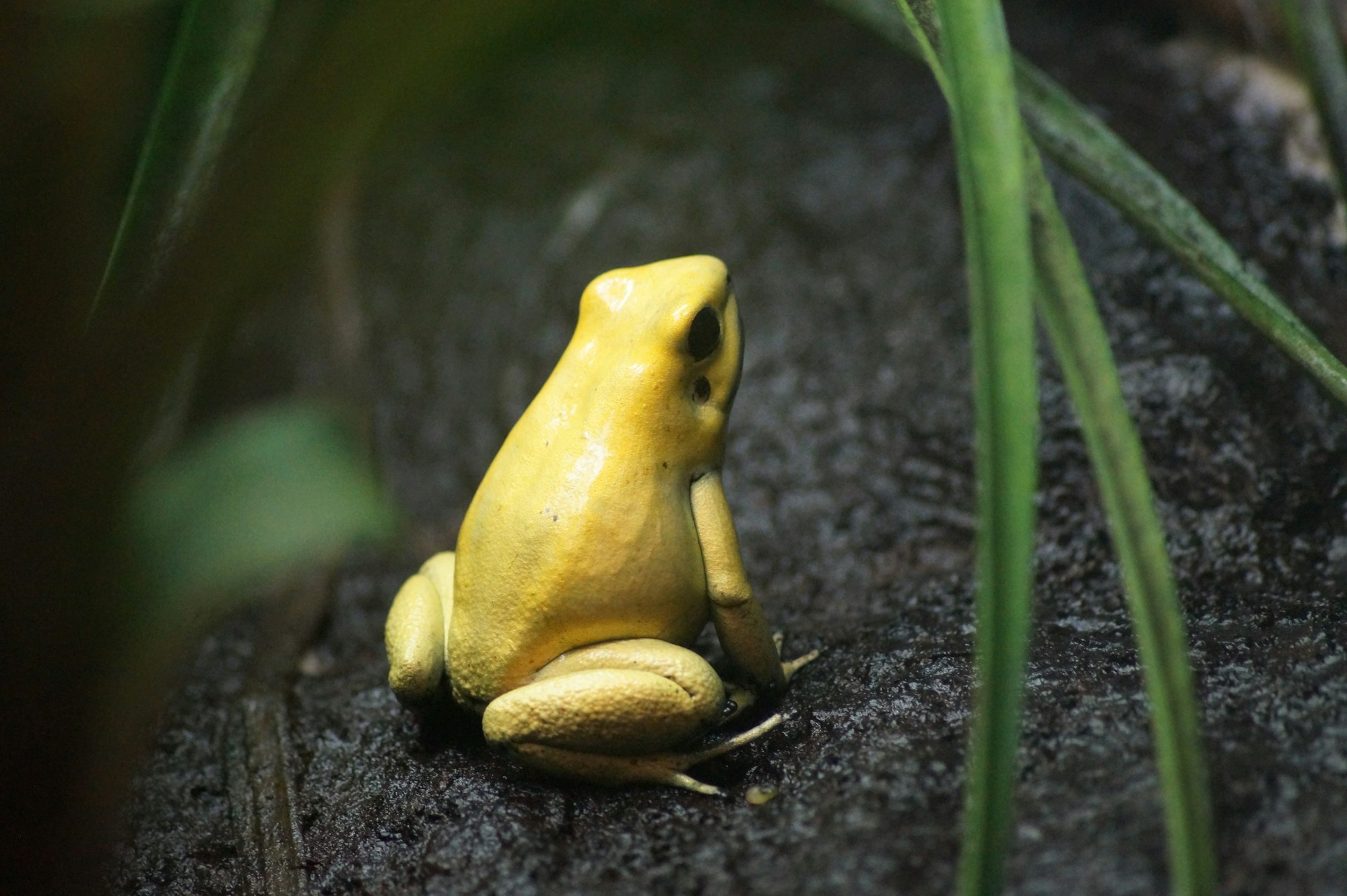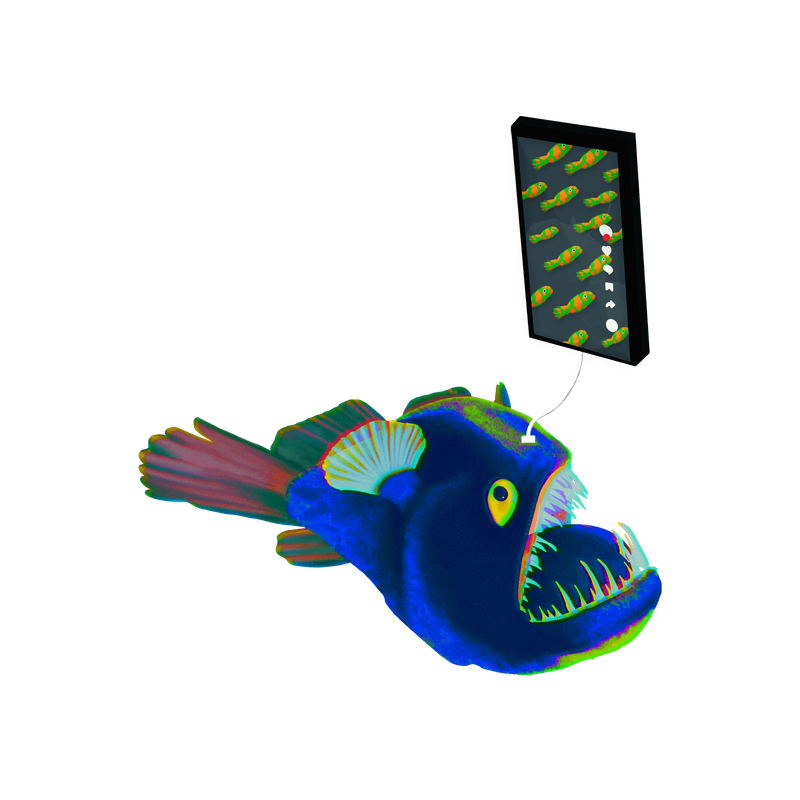Introduction
In Immanuel Kant’s Critique of the Power of Judgment (1790), he famously denies the possibility of a science of life, arguing that the forces constitutive of nature are incapable of explaining organisms. Kant’s denial is as much informed by his inheritance of a Newtonian conception of science, as on his recognition that organisms are exceptional in being constituted teleologically. Whereas the genesis of the entire universe can be deduced by appeal to the physical laws governing forces, Kant thinks that these same laws are utterly helpless in explaining the genesis of a caterpillar or oak tree. Force cannot explain life.
Kant’s repudiation of the possibility of a science of life was not universal among his contemporaries, even among those who agreed with Kant on the limitations of force in explaining life. After explicating Kant’s position, I will focus on two thinkers in particular: the Göttingen naturalist, Johan Friedrich Blumenbach, and the idealist philosopher, Friedrich Schelling. In recognizing the limits of foregoing approaches to life science and reimagining the concepts of force available for it, I hope to show how Kant, Blumenbach, and Schelling contributed fundamentally to the beginning of biology as we know it today.

Kant and the Organism
Explanatory Force
Although mechanical explanation plays such a fundamental role in the Critique of the Power of Judgment (1790), as that which cannot explicate the organism, Kant offers little in terms of defining it, and he is equally abstemious in providing examples. Kant’s paucity in this respect may be accounted for by the fact that mechanical explanation was so pervasive when he wrote his text that he may have taken an understanding of it for granted.
The closest he comes to explicating mechanical explanation in the third Critique is by way of a definition of mechanical generation. Kant defines it as the representation of “a material whole, as far as its form is concerned, as a product of the parts and of their forces and their capacity to combine by themselves (including as parts other materials that they add to themselves)” (AA V:408). A natural being that is generated mechanically can be reduced to its parts and their forces. This being can thus be explained through the (re)composition of these parts and forces, which refer, respectively, to its matter and to physical forces like gravity, levity, elasticity, and attraction and repulsion.
The causality of mechanical generation is always efficient, which in the most basic sense means that the cause must temporally precede the effect. A precedes B, which precedes C, and so on. This unidirectionality is important to underscore, because Kant will contrast it with natural teleological causality. The temporality of teleological causality appears reciprocal, rather than unidirectional. I’ll talk more about natural teleological causality in a moment.
Given this analysis of mechanical generation, we can understand mechanical explanation as the process of breaking apart a phenomenon into its constituent parts and forces, and then building that phenomenon from those parts. Kant echoes the essence of this methodology, when he writes, “We understand completely only that which we ourselves can make and bring about in accordance with concepts” (AA V:383). This statement implies that mechanical explanation does no less than (mentally) produce the very beings under investigation.
As strange as such a claim might sound, as if Kant were going to make the starry sky above us in explaining it, he in a way does just that in his essay, published 35 years earlier, entitled “Universal Natural History and Theory of The Heavens or Essay on the Constitution and the Mechanical Origin of the Whole Universe according to Newtonian Principles” (1755). Kant writes, “It seems to me that in a certain sense one could say here without being presumptuous: Give me matter and I will build a world out of it, that is, give me matter and I will show you how a world is to come into being out of it” (AA I:230). He follows through on this declaration. Although his essay covers several topics, its most substantial part concerns how the universe (milky way, stars, planets, etc.) was constituted through mechanical laws alone (attraction and repulsion, gravity). Given only the mass of the planets and forces of matter, Kant demonstrates that it is possible to deduce the original nebulous state of the universe and the necessary developments it had to take to reach its present form.
At the same time, Kant offers a hesitation not unfamiliar in the third Critique. He writes, “Are we in a position to say: Give me matter and I will show you how a caterpillar can be created?” (AA I:230). The answer is emphatically “No.” Kant continues, “It should therefore not be thought strange if I dare to say that we will understand the formation of all the heavenly bodies, the cause of their motion, in short, the origin of the whole present constitution of the universe sooner than the creation of a single plant or caterpillar becomes clearly and completely known on mechanical grounds” (ibid.).

Flight is for the Birds
The same could be said of a bird, that is, we would sooner come to know the origin of the entire universe before coming to know it. Kant uses the bird as an example in the third Critique to introduce teleological causality (AA V:360). If we consider the bird’s hollow bones, wing and tail position, and so forth from the perspective of mechanical generation, we come to the conclusion that the bird’s existence is contingent, for there is nothing in nature, in its fundamental matter and forces, that would provide the ground of its possibility. That would require consideration of its purpose: to fly. The concept of flight explains the bird’s hollow bones, wing and tail position, and so on. Yet, flight only comes to be after the existence of these parts, as their effect. If every natural cause must precede its effect, then it appears that such an arrangement can only exist contingently, unless one introduces teleological causality.
The introduction of teleology is not inherently problematic, as in the classic example of someone building a house for the purpose of rental income. This model of teleological causality, as applied to an artificial object, presents no difficulty, because the end, located in the intention of its builder, is external to the house under construction. But the bird, unlike the house, must generate itself. The difficulty that Kant identifies is that the intention of the house builder cannot be applied to the organism, which is not organized by an external agent, but organizes itself internally. The question, then, which Kant addresses in the third Critique is this: How can we explain the self-organizing organism, if the mechanical explanation used in the domain of natural science and the teleological explanation used in the domain of art (and natural theology) are both insufficient?
The Inexplicability of Organisms
The answer is that we cannot. Organisms are inexplicable. This belief motivates Kant’s famous assertion that:
It is quite certain that we can never adequately come to know organized beings and their internal possibility in accordance with merely mechanical principles of nature, let alone explain them; and indeed this is so certain that we can boldly say that it would be absurd for humans even to make such an attempt or hope that there might yet arise a Newton who could make comprehensible even the generation of a blade of grass according to natural laws that no intention has ordered; rather we must absolutely deny this insight to human beings. (AA V:400)
In this quote, Newton is a metonym for natural science, which makes Kant’s assertion so forceful: there will never be a science of the organic world like there is of the inorganic one. There will never be scientific knowledge of organisms.
The scope of this paper prevents me from expatiating on the details concerning Kant’s assertion, even though this claim assuredly sounds strange or unbelievable to anyone that has witnessed the immense insights gained by twentieth- and twenty-first century biology. Instead, I want to close this section by drawing attention to two anticipatory conclusions.
- By denying that natural science could explain organisms, Kant inadvertently helped to inaugurate a new domain of inquiry, that is, biology, by demonstrating the need for the field to develop its own concepts and methods. Indeed, twelve years after the publication of the third Critique, Gottfried Reinhold Treviranus would publish the first work to use the word “biology,” not only in its title, but also in its modern meaning.
- Kant writes, “The organized being possesses in itself a formative force [bildende Kraft], and indeed one that it communicates to the matter, which does not have it (it organizes the latter); thus it has a self-propagating formative force, which cannot be explained through the capacity for movement alone (that is, mechanism)” (AA V:374). Kant’s crystalline identification of the organism as self-organizing and the insufficiency of foregoing concepts of force to represent this helped to champion philosophers and naturalists who were imagining new concepts of force.
Blumenbach and the Bildungstrieb
One such naturalist to introduce a new concept of force is Johann Friedrich Blumenbach (1752-1840). In a continually revised short work, first published in 1780, Blumenbach coins the concept of Bildungstrieb (formative drive). To be clear, Blumenbach’s new concept is not conceived of because of Kant, since it appears prior to the third Critique. Rather, Blumenbach intends the formative drive to be a solution to the problem of generation, demonstrating once and for all that his theory of epigenesis (and not the competing theory of preformation) is the true representation of organic development.
Epigenesis and preformation were both answers to the question of how organisms come to be. Preformation, the preferred theory in the eighteenth century, explains generation through the preexistence of an embryo created by God at the time of Creation. The embryo then awaits its preordained development at some time in the future. Epigenesis, however, explains generation as the embryo’s gradual development from undifferentiated primordium.
Defining the Formative Drive
In his essay on the Bildungstrieb, Blumenbach reviews the best (and worst) evidence in favor of preformation, ultimately rejecting this theory of generation. He declares, “No preformed germs preexist” (1789, 24-5). Instead, he continues:
In the previously raw unformed generative matter of organized bodies, after the matter has reached maturation and the position of its determination, a particular drive that is operative throughout life becomes active, by which organized bodies receive their determinate form in the beginning, then maintain it throughout life, and, where possible, reproduce it if they somehow become mutilated.
A drive that consequently belongs to the vital forces [Lebenskräften], but that is just as clearly different from the other kinds of vital forces of organized bodies (contractibility, irritability, sensibility, etc.) as from the universal physical forces of the body in general; it appears to be the first, most important force for all generation, nutrition, and regeneration, and can be designated by the name “formative drive” (nisus formativus), in order to differentiate it from other vital forces. (ibid.)
These remarks introduce the formative drive. It is operative in the processes of generation, nutrition, and regeneration, which correspond to the initial determination, subsequent maintenance, and continuous restoration of organic form. Thus, the formative drive shapes living beings into what they are and what they will become, and it reproduces that form when it’s mutilated. Although Blumenbach associates it with the other Lebenskräften (like irritability), he intends the formative drive to be considered as distinct from them as well as from physical forces in general. He emphasizes this difference by using the term “Trieb,” rather than “Kraft”, in coining the term “Bildungstrieb.”
Blumenbach’s conception of the formative drive responds to many of the challenges that Kant identifies. The formative drive is recognized as being able to determine the form of the organism, guide its growth, and reconstitute it when it is injured. This regenerative ability is an important one for Blumenbach, as it was his observation of it in the polyp (hydra) that led him to the Bildungstrieb concept in the first place. He observes that the regenerative ability is dynamically reactive, able to respond to contingencies in ways that would be seemingly impossible for physical forces that must act the same in every circumstance.
One final point to emphasize about the formative drive is the unity it brings to the organism. All the fundamental vital processes—generation, growth, and regeneration—stand under a single umbrella, underscoring the coherence of the organism and its activities. Like Kant, this recognition of a common drive underlying all organic nature, inaccessible to foregoing natural forces, effectively demarcates a domain of investigation that requires its own concepts and methods.
The Cause of the Formative Drive
If the Bildungstrieb is the main ground of all generation, nutrition, and regeneration, then what is its ground? What is the cause of the Bildungstrieb? Immediately after introducing the formative drive, perhaps in anticipation of such questions, Blumenbach writes,
Hopefully, for the majority of readers the reminder is entirely superfluous that the word Bildungstrieb as well as the words attraction, gravity, etc. should serve neither more nor less than to designate a force whose constant effect has been recognized from experience, but whose cause as well as the cause of the generally recognized natural forces is for us a qualitas occulta. What OVID says is true of all these forces: causa latet, vis est notissima [The cause is hidden; the results well-known]. The merit in studying these forces is only to ascertain their effects more closely and to bring them under more general laws. (1789, 25–6)
Significantly, Blumenbach reveals here that the formative drive’s cause is hidden; all that is known of it are its effects as gleaned from experience. Investigation of the Bildungstrieb (in addition to other natural forces) will never yield knowledge about their causes, but only allow the researcher to know the effects in more detail and to bring them under fewer, more general laws.
The stated inspiration, or perhaps warrant, for taking this position is Newton. Blumenbach’s invocation of “occult qualities” indicates this provenance because it is a term Newton sanctioned in his natural philosophy. We are confirmed in this supposition by Blumenbach’s direct reference to the natural philosopher’s Opticks in the footnote to the quoted passage.
We find, then, that Blumenbach, like Kant, found something intrinsically inscrutable about the organism. However, Blumenbach did not think that the unknowability of the Bildungstrieb’s cause also prevented any scientific knowledge of life.
Whereas Kant calls on Newton to deny the possibility of biology, Blumenbach calls on Newton to sanction it. The inability to know the cause of gravity does not prevent the physicist from formulating laws based on observations of it. Likewise, Blumenbach thought, the inability to know the cause of the Bildungstrieb did not prevent the biologist from formulating laws based on observations of it.
Schelling and Excitability
The epistemological modesty exercised by Kant and Blumenbach with respect to the knowledge of life itself did not hold for Schelling, who, engaging with and challenging Kant’s philosophy and Blumenbach’s science, embarked on a new philosophy of biology.
To detail these engagements is outside the scope of this presentation. Rather, I want to focus on one facet of them. In trying to come to terms with the difficulties identified by Kant and Blumenbach concerning the organism, Schelling develops a new concept of a force that aims to represent its complex nature. In fact, Schelling says, this force, which he calls excitability, is nothing short of the “essence of the organism” in nature (HKA I.7:170–1[105]).
The Origin of Excitability
The concept of excitability stems from the Elementa Medicinae(1780), in which its author, the Scottish physician John Brown (1735–88), developed an influential system of medicine based on it. Excitability itself denotes the property by which living beings “can be affected by external agents, as well as by certain functions peculiar to themselves, in such a manner, that the phenomena peculiar to the living state can be produced” (Brown 1795, 3). The key to Brown’s concept, which proved so fecund for Schelling, was the importance given to receptivity. In fact, Brown defined an organism as alive if and only if it could still be affected.
The Logic of Excitability
In Schelling’s hands, excitability is meant to distinguish the organic world from the inorganic. It signifies, however, a relation that is more complex than simple opposition. Universal forces act, as their name implies, on all of nature equally; for example, the attractive force of gravity acts on all corporeal bodies without exception. In this domain, the difference between inner and outer is inapplicable. This is not the case with excitability. Schelling writes, “RECEPTIVITY to external nature is conditioned by its ACTIVITY against it. Only insofar as it strives against external nature can external nature act upon it as an inner factor” (HKA I.7:118[54]). An external influence, to be such, can only act if there is a corresponding activity by a product against it, which, in turn, requires the product to have receptivity for the external influence. In other words, an external force can only be active on an internal nature already receptive to it. This receptivity, in turn, is expressed by an inner activity against the external one. Schelling writes, “Activity and receptivity arise simultaneously in one and the same indivisible moment, and precisely this simultaneity of activity and receptivity constitutes life” (HKA I.7:129:[65]).

This complex logic of excitability can be elucidated, in part, by an example. Schelling explains excitability vis-à-vis the condition of poison’s effect on the animal body. He writes, “For poison as poison the body has no receptivity, except to the degree that it is active against it. Poison does not attack the body, but the body attacks the poison” (HKA I.7:120[56]). Poison in itself does not possess the dangerous qualities attributed to it. Poison is not harmful to the golden poison frog (Phyllobates terribilis). Poison, then, only takes on its harmful quality in relation to the body of the animal that has been affected. The body is receptive to the poison in acting against it. It is by counteracting the poison that the external influence can actually act upon the inner factor. Therefore, excitability is reciprocity in itself, the simultaneous moments of receptivity and activity essential to the organism. Consequently, the organism can change external nature and be changed by it, while, at the same time, maintaining itself as itself.
Schelling’s analysis of excitability is an attempt to come to terms with the organism’s dynamic causality and the difficulties it poses as identified by Kant and Blumenbach. Opposed to the latter’s epistemological modesty, Schelling sought to solve these difficulties by imagining a new force, or, more precisely, re-imagining an old one, that was capable of accounting for the dynamic reciprocity that was thought to be the essence of the organism.
Conclusion
In closing, I would like to remark on two (likely unintended) effects of Kant’s denial that natural science could explain the organism. First, by crystallizing why and how the organism is distinct, Kant brought this concept to the forefront of philosophic and scientific discourse in the 1790s and beyond. Second, Kant’s denial also helped to shed light on those who had already been re-imagining the forces at work in the living world, like Blumenbach, and offered an invitation for others, like Schelling, to begin to do so. The formative drive and excitability were attempts to represent the organism’s dynamic ontology of self-organization. These attempts, in turn, contributed to the demarcation of biology as a new scientific domain.
References
Blumenbach, J. F. 1789b. Über den Bildungstrieb. 2nd ed. Göttingen: Johann Christian Dietrich.
Brown, John. 1795. The Elements of Medicine of John Brown, M.D. Edited by Thomas Beddoes. Vol. 1. London: J. Johnson.
Kant, Immanuel. 2001[1790]. Critique of the Power of Judgment. Edited and translated by Paul Guyer. Cambridge, UK: Cambridge University Press.
———. 1900ff. Kants Gesammelte Schriften. (AA) Edited by Königlich Preußische Akademie der Wissenschaften. Berlin: George Reimer/de Gruyter.
Schelling, F. W. J. 2004. First Outline of a System of the Philosophy of Nature. Translated by Keith R Peterson. Albany, NY: State University of New York Press.
———. 2001. Historisch-Kritische Ausgabe (HKAI.7). Eds by Wilhelm G. Jacobs und Paul Ziche. Frommann-Holzboog.
Details
This talk was delivered on 17 Jan 2020 in Hamburg, Germany at the Form- und Bewegungskräfte Conference, as part of the DFG-Kolleg-Forschungsgruppe "Imaginarien der Kraft"





